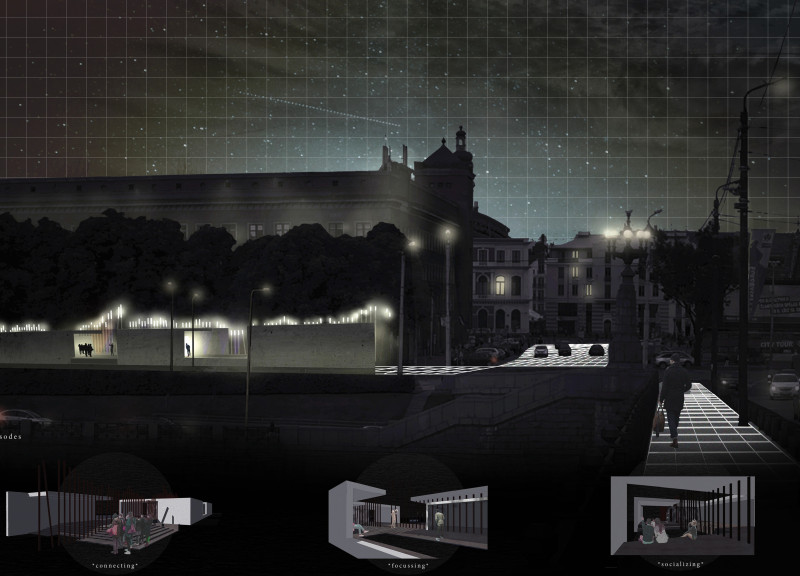5 key facts about this project
### Overview
Located in Riga, the memorial dedicated to the Baltic Way represents a significant moment in Latvia's pursuit of independence. The design aims to create a contemplative environment that integrates urban space with historical significance while promoting community engagement. By reinterpreting traditional memorial concepts, the structure facilitates both remembrance and interaction within the public realm.
### Spatial Strategy
The design consists of interconnected pavilions that accommodate various functions, including exhibition areas, a café, and a souvenir shop. Organized in a longitudinal form, the layout encourages visitors to traverse the space, reflecting the movement of the historical marches. Key to this configuration are vertical wooden poles that punctuate the design and symbolize the voices of those who participated in the events. These elements not only enhance aesthetics but also provide shade and improve acoustics, supporting diverse activities ranging from intimate gatherings to larger events.
### Material Selection
The choice of materials plays a crucial role in both functionality and symbolism. Concrete is prominently used for its stability and permanence, signifying resilience. Glass panels in exhibition areas promote transparency and foster connections with the surrounding environment. Wood enriches the design with warmth and organic texture, while metal ensures structural integrity and introduces a contemporary aesthetic. The combination of these materials reflects the project's intent to bridge historical memory with present-day experiences, creating a meaningful public space.
### Integration with Landscape
The memorial's design enhances the relationship with nearby public spaces, offering outdoor experiences that expand upon the interior functions. This approach effectively integrates the built environment with nature, allowing for a harmonious coexistence of remembrance and leisure. The strategic use of lighting further amplifies the memorial's presence after dark, ensuring safety while cultivating an atmosphere of reflection and contemplation.






















































